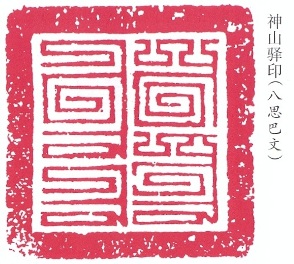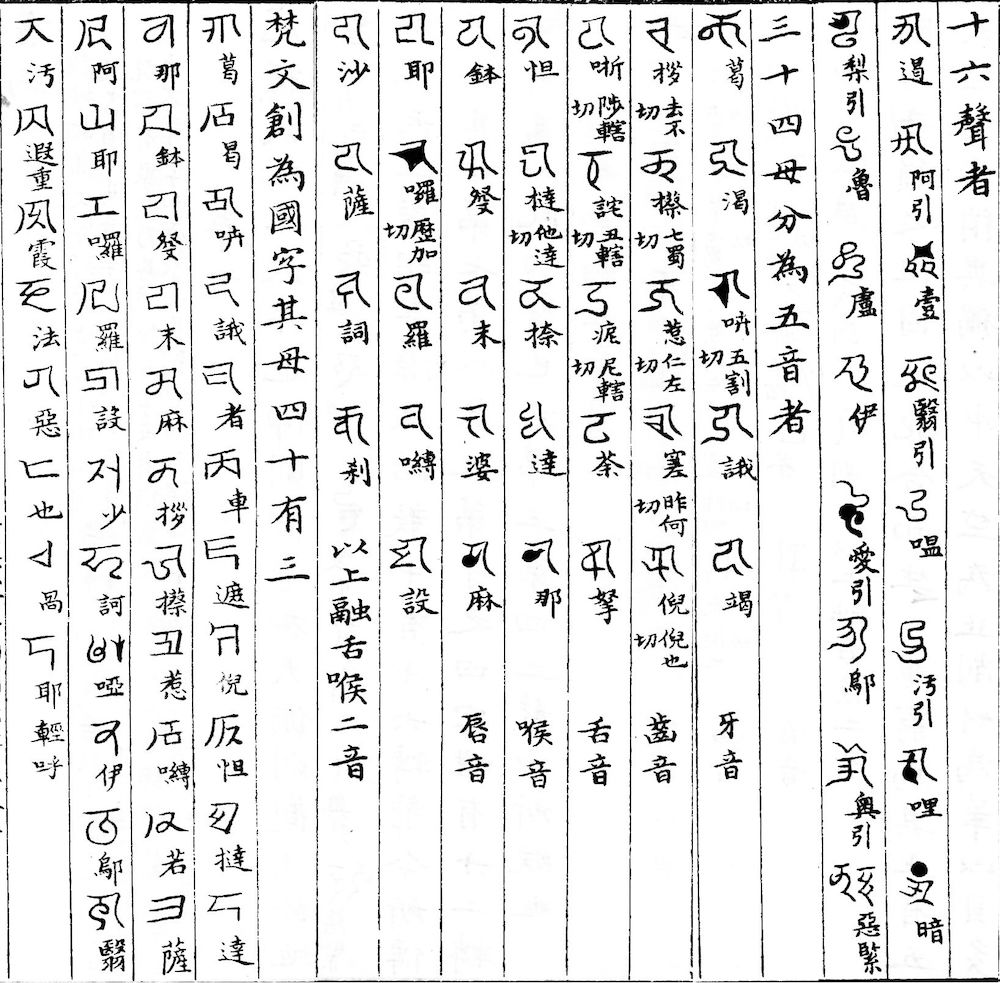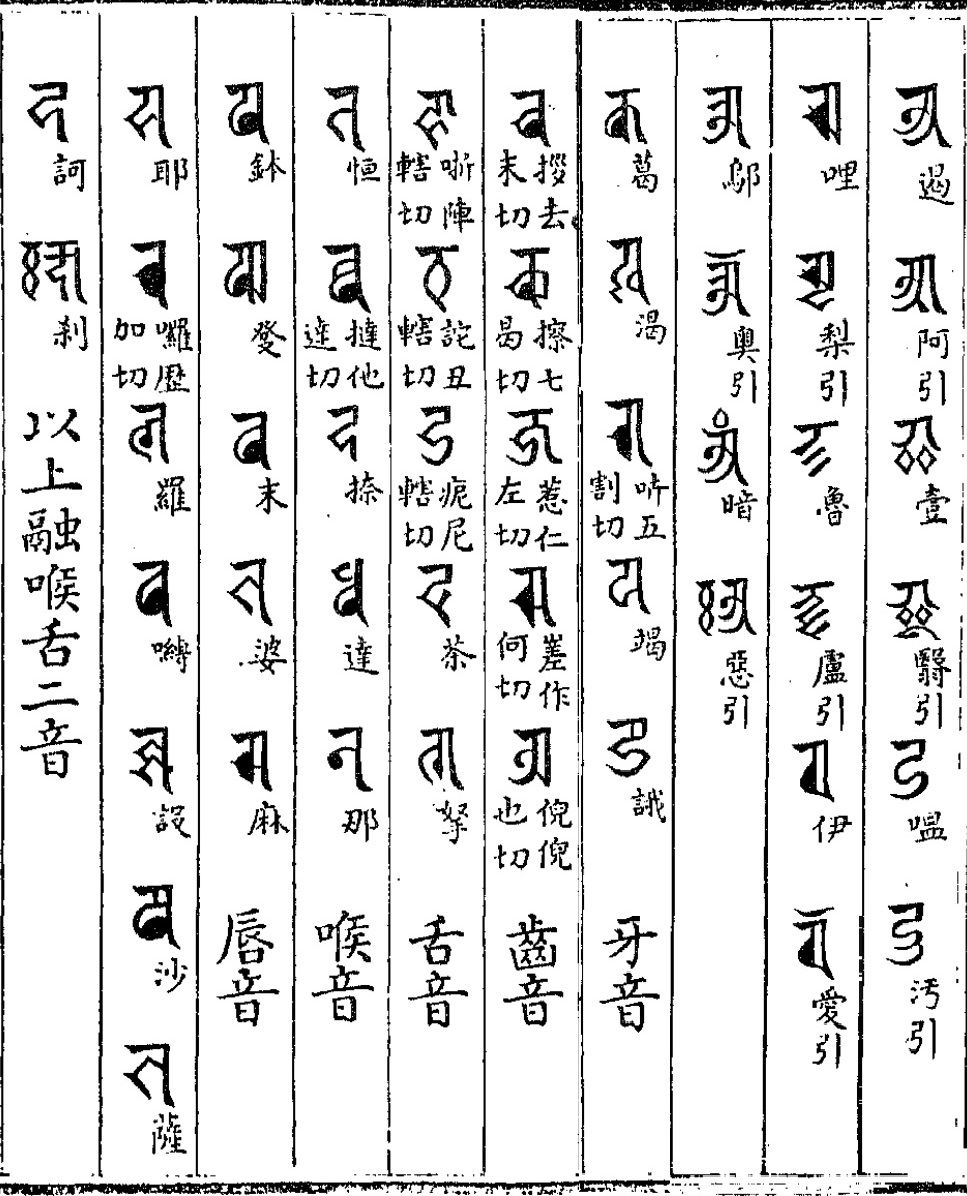The 'Phags-pa script (pronounced "Phagpa", in Chinese called Basiba zi 八思巴字 or Basiba wen 八思巴文) is a script developed to write in Mongolian language. It is an alphabetic script based on the Tibetan Brahmi alphabet. It can serve as a source for the pronunciation of Early Modern Chinese. It is preserved in a lot of paleographic materials like monumental inscriptions (stelae), official seals, badges of rank or identification, paper currency and coins, as well as steelyard weights, but also literary sources, especially primers like the Baijiaxing 百家姓, and the dictionary Menggu ziyun 蒙古字韻.
 |
Seal of the Yuan-period courier station Shenshan yi 神山驛, in 'Phags-pa seal script. Source: Huang Dun 黃惇 (ed., 1999). Zhongguo lidai yinfeng xilie 中國歷代印風系列, Yuandai yinfeng 元代印風 (Seal styles of the Yuan period). Chongqing: Chongqing chubanshe. |
The script was invented by 'Phags-pa (1235/39-1280, Chinese: Basiba 八思巴), a Tibetan prince and lama who was appointed national preceptor (guoshi 國師) Qubilai Qan (r. 1260-1294), the Mongol emperor of the Yuan dynasty 元 (1279-1368). The alphabet was created in 1269 as a script for Mongolian, but also as a tool for the transcription of other languages, like Chinese, Tibetan, Sanskrit or Uighurian. The script has 41 letters (with new additions and variants up to 57) that can be combined to many hundred syllables. It is derived from the Tibetan Brahmi script, which is itself a derivate of Indic scripts. There are, nevertheless, also some non-Tibetan elements in the 'Phags-pa script. The script has a very quadratic appearance and is therefore also called fangtizi 方體字 "square script" in Chinese. Like in all Indic scripts, the vowel [a] is inherent in the letter and is not expressively written. There is a normal script and also some decorative scripts (in Chinese called seal script, zhuanti 篆體). The script is written in columns from left to right.
The earliest lists of the 'Phags-pa script are to be found in the calligraphy books Fashukao 法書考 and Shushi huiyao 書史會要, and in the dictionary Menggu ziyun. It became obsolete after the downfall of the Yuan dynasty in China but was much longer used in Tibet.
A study on the transcription of Chinese by the 'Phags-pa script has been made by W. South Coblin (2007). A Handbook of 'Phags-pa Chinese. Honolulu: University of Hawai’i Press.
 |
Example of the 'Phags-pa script mentioned in the calligraphy book Fashukao 法書考 by Sheng Ximing 盛熙明 from the Yuan period. The three columns to the right list the vowel letters, with rendering in Chinese. The rest of the listing are six groups of initial consonants, velars (yayin 牙音), dentals (chiyin 歯音), linguals (sheyin 舌音), gutturals (houyin 喉音), labials (chunyin 唇音), various sounds with no counterpart in Chinese and named "mixed guttural-lingual sounds" (rong hou-she yin 融喉舌音). The four columns to the left is the 'Phags-pa alphabet, each letter transcribed with a Chinese character. |
 |
Example of the 'Phags-pa script mentioned in the calligraphy book Shushi huiyao 書史會要 by Tao Zongyi 陶宗儀 from the Ming period. The listing seems to be borrowed from the Fashukao. |